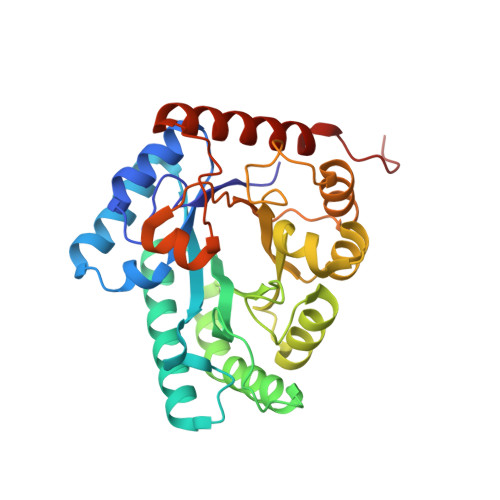Directed Divergent Evolution of a Thermostable D-Tagatose Epimerase towards Improved Activity for Two Hexose Substrates.
Bosshart, A., Hee, C.S., Bechtold, M., Schirmer, T., Panke, S.(2015) Chembiochem 16: 592-601
- PubMed: 25655925
- DOI: https://doi.org/10.1002/cbic.201402620
- PubMed Abstract:
Functional promiscuity of enzymes can often be harnessed as the starting point for the directed evolution of novel biocatalysts. Here we describe the divergent morphing of an engineered thermostable variant (Var8) of a promiscuous D-tagatose epimerase (DTE) into two efficient catalysts for the C3 epimerization of D-fructose to D-psicose and of L-sorbose to L-tagatose. Iterative single-site randomization and screening of 48 residues in the first and second shells around the substrate-binding site of Var8 yielded the eight-site mutant IDF8 (ninefold improved kcat for the epimerization of D-fructose) and the six-site mutant ILS6 (14-fold improved epimerization of L-sorbose), compared to Var8. Structure analysis of IDF8 revealed a charged patch at the entrance of its active site; this presumably facilitates entry of the polar substrate. The improvement in catalytic activity of variant ILS6 is thought to relate to subtle changes in the hydration of the bound substrate. The structures can now be used to select additional sites for further directed evolution of the ketohexose epimerase.
Organizational Affiliation:
Department of Biosystems Science and Engineering, ETH Zürich, Mattenstrasse 26, 4058 Basel (Switzerland).

















